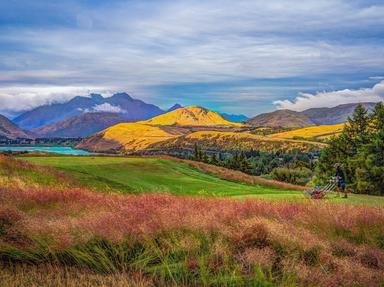Quiz Answer Key and Fun Facts
1. You must be mad, expecting me to know of the city whose name possibly means 'Two Tides'. After all, many of New Zealand's cities are built on harbours. Which city has a 'fast food' claim to fame?
2. This metropolitan area north of Auckland sounds like a great place for a holiday. Its Maori name should be 'Takutai' ('the beach'). Where in New Zealand might I consider wearing a flower behind my ear?
3. Phew! How can you expect me to visit, "Second Lake"? Everyone knows the place stinks! Which New Zealand city features mud pools and geysers?
4. The English explorer, Sir Francis Drake, would be at home in 'Ngamotu', a place with an active stratovolcano nearby. What west coast city is 'like no other!'?
5. A place with a precious river? What city in the Wellington region has the Maori name, 'Awakairangi' and has a nearby namesake?
6. If I told you that we're off to Heretaunga, you might think we're going to a place in the Wellington district. No! What Hawkes Bay city has a name that might remind you of a 1066 fight?
7. There aren't many towns and cities in New Zealand that have had problems deciding what to call themselves, but 'Big Harbour' is one. It is certainly a 'River City' and sits at the mouth of NZ's longest navigable waterway. What is this place more commonly known as?
8. At an elevation of 64m (211'), Orongomai is higher than its nearby namesake. What is this city better known as?
9. Kirikiriroa has New Zealand's longest river running through its center. Boat races against crews from other universities are held on the river. What is "The Tron's" English name?
10. Logs, but not the ones that come from trees, are suggested by Ahuriri's English name. What New Zealand city suffered a devastating earthquake in 1931 and is now known for its Art Deco architecture?
Source: Author
psnz
This quiz was reviewed by FunTrivia editor
agony before going online.
Any errors found in FunTrivia content are routinely corrected through our feedback system.
